List of Authors
>>About this blog
Recent blog post
|
[Silver]
May 24, 2018 12:00
Today, we got off at Tokyo Metro Mitsukoshimae Station and enjoyed a walk around Nabashi and Nihonbashi.
I wanted to explore the restaurant in Cored Muromachi, where many shops are located.
I went up to the Toho Cinema of Choledo 2. My favorite movie had started screening and had time until the next screening.
I started walking around the restaurant in an attempt to cross the connecting bridge with Choledo 1. At the back of the Mexican dish "El Bolacho", I found a signboard of "Takumi Okiya".
It seems to be a famous restaurant for teppanyaki, but when it enters after 1 o'clock on weekdays, it is served with a lunch menu that is friendly to your wallet. "Stee steak bowl" of beef serloin. Normally, the price of ¥1,450 is 1,000 yen including tax on weekdays. I  also came with coffee after dinner. also came with coffee after dinner.
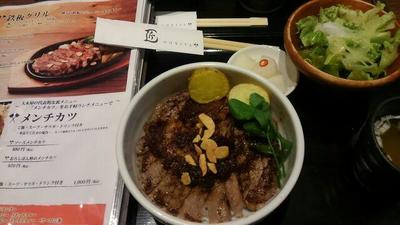
The 29th is meat day, so usually the price of ¥1,450 is ¥500 for only 50 meals. There is a great benefit for the first time. However, there are a lot of people lined up around 11 o'clock, so if you do not arrive a little before that, you may not be able to find a benefit.
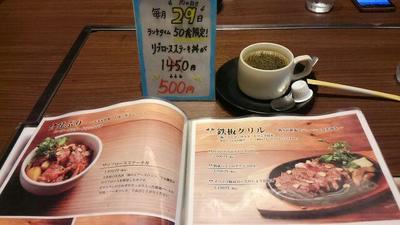
When you use it, get a point card. With 5 stamps, you can get 500 yen per person from the menu at lunch time. At dinner time, your favorite monja one dish service. For 10 stamps, one item per person from the menu is free at lunch time. At dinner time, 15% off your bill. That's right. (Please check the validity period of this point card.)
For more information, please check this website. https://mitsui-shopping-park.com/urban/muromachi/storeguide/index.html
[Nyan,]
May 21, 2018 12:00
After renovation work, I went to the Edo Tokyo Museum, which was reopened in April 2018.
At the souvenir corner before entering the museum, "That? Can I buy rice cakes here if I go to Higashimukojima? Can you buy that dumpling from Kototoi Bridge here? ! The promotional video in the hall is also an interesting finish that connects the past and the present, reminiscent of "Tokyo2020".
With the expectation of such a forward swing, it is the first thing to enter the hall and greet you ... Rather than welcoming you, you cross Nihonbashi and head to the hall.
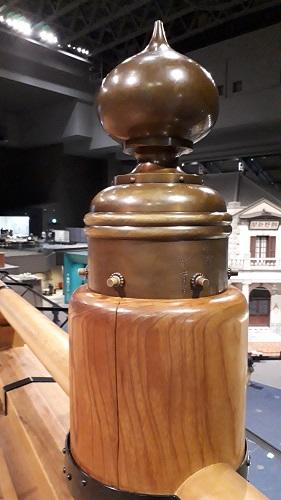
Speaking of the official characters of the Edo Tokyo Museum, "Gibo-chan" is the only one that I have been conducting research on loose characters from all over the country. In which world do you have characters with the motif of Nihonbashi's balustrade giboshi? Did the gentle character who wants to ask the person in charge for an hour get permission from Chuo-ku? I can't help but have a secret doubt.
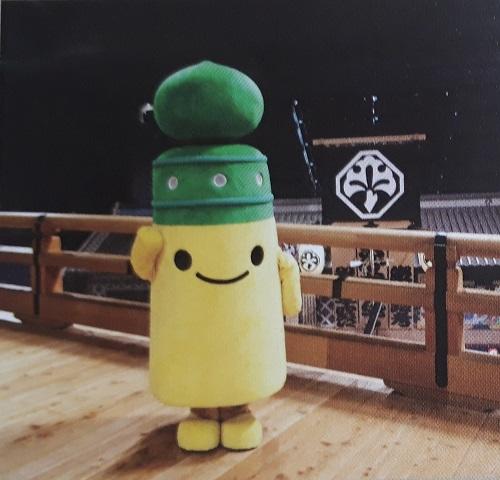 Too much maniac ... Gibo-chan. Too much maniac ... Gibo-chan.
The permanent exhibits also have various tastes, such as "Try in the daimyo's palanquin" and "Try up the mat that raises the morale of fire extinguishing in the event of a fire" There is no. Among them, the very elaborate miniature version, "The state of the town at the time of Edo," is not fascinating for me to go to Nagahama, Shiga Prefecture to see Kaiyodo's museum.
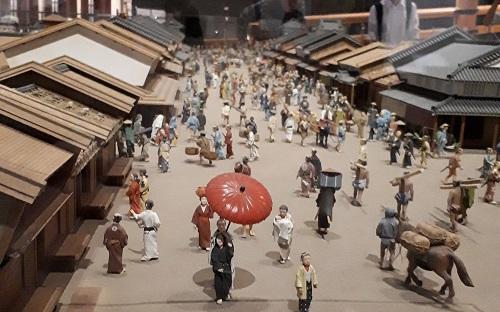 Binoculars are also installed at hand, and I feel the pride of the exhibition that the more you expand, the more you can understand the detailed design. Binoculars are also installed at hand, and I feel the pride of the exhibition that the more you expand, the more you can understand the detailed design.
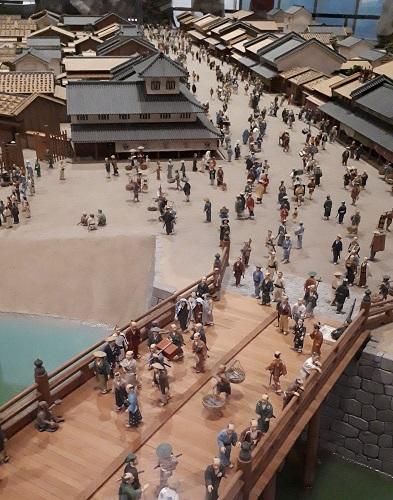 There were a lot of school excursions and Oboshiki students in the hall. There were a lot of school excursions and Oboshiki students in the hall.
"When is Edo shogunate?" "Is it 1600 years?" "Yeah,"
A conversation like that
"Two years after Ieyasu became a conquer general in 1603, Hidetada took over his job." "Oh, there was a major renovation of Edo Castle as if he was waiting for his replacement, in 1606, starting with the contract of Honmarutaka Ishigaki. "
I'm sure that the conversation will be upgraded (it's a little excited).
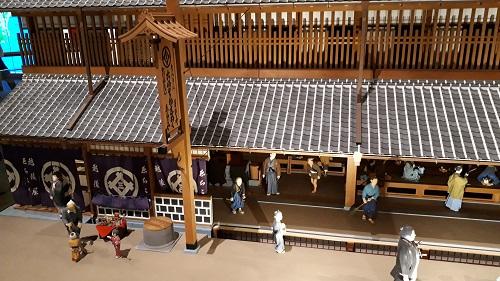 There was also a miniature of Mitsui Echigoya (now Nihonbashi Mitsukoshi), which flourished with no current silver price. The reason why women's gaze is gathered by wrestlers who walk gently on the road is probably due to the detailed setting that women were banned at that time. There was also a miniature of Mitsui Echigoya (now Nihonbashi Mitsukoshi), which flourished with no current silver price. The reason why women's gaze is gathered by wrestlers who walk gently on the road is probably due to the detailed setting that women were banned at that time.
By the way, the Edo Tokyo Museum is full of highlights. It was introduced as a spot that can be enjoyed all day as a teaching material reflecting on the history of Chuo-ku.
[Silver]
May 17, 2018 09:00
For the first time in six months, I went to the Kodemmacho prison exhibition hall in the "Jushi Square Annex" adjacent to Jushi Square (former Jushi Elementary School).
I went there in October last year, so I haven't been there for a while.
As usual, when I entered from the reception desk of Jushi Square, there was no model of the prison. When I asked a kind staff member, I was told that it was relocated to the place where it entered from the entrance to Jushiyu.
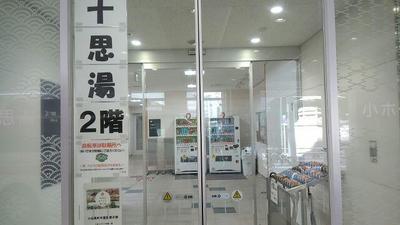
It is a miniature version of the very elaborate Kodemmacho prison. The kind explanation is also perfect.
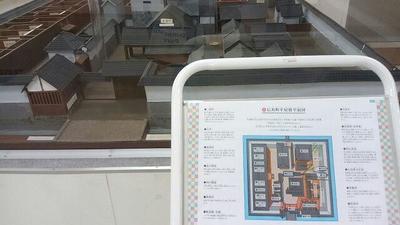
A great man, including Dr. Shouin Yoshida, who was damaged in Ansei's prison that rocked late Tokugawa shogunate, was imprisoned and executed.
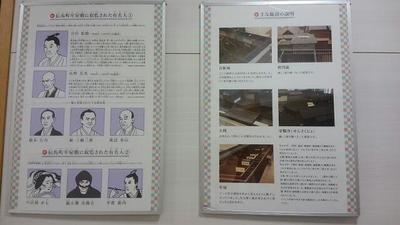
It was a time to think about history and think about the achievements of great people who ran through the Meiji Restoration from the end of the Tokugawa period.
We recommend walking along Ningyocho-dori from Kodemmacho and strolling around Nihonbashi Elementary School, Uokyu Main Store, and Kakigara Ginza where Saigo Don lived. And enjoy eating and shopping in Ningyocho, which is full of humanity.
Click here for the website of "Kodemmacho Gunyashiki Exhibition Hall" and the exhibition hall in Chuo-ku http://chuoku-machikadotenjikan.jp/tenjikan/royashiki/
[Minato kid]
May 13, 2018 12:00
Hello, this is Minato kid. Currently, Chuo-ku has a total of 18 pedestrian bridges, 7 in the Kyobashi area, 6 in the Nihonbashi area, and 5 in the Tsukishima area. Today, I would like to introduce two pedestrian bridges that are next to each other over Showa-dori. There was also a nice sidewalk here.
♪ Gin Toichi Pedestrian Bridge

"Gin Toichi Pedestrian Bridge" is located on Showa-dori, Ginza 1-chome 14-20. Here, there were four pictures representing the waterside of Chuo-ku.
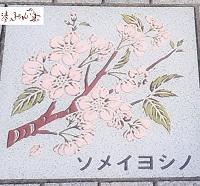
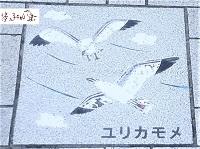
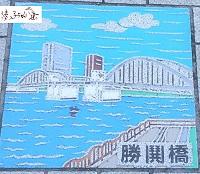
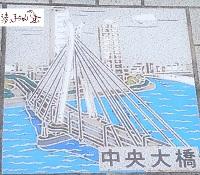
There are many waterfronts in the Sumida River, canals, Shinsui-Koen Park and Chuo Ward. There is a beautiful cherry blossom spot, where wild birds such as black gulls visit and make us feel the season. And the bridges full of charm are symbols of Chuo-ku.
♪ Takaramachi Pedestrian Bridge

"Takaramachi Pedestrian Bridge" is located on Showa-dori, Kyobashi 2-9-16. Here, eight kinds of seasonal flowers were drawn in order from spring.
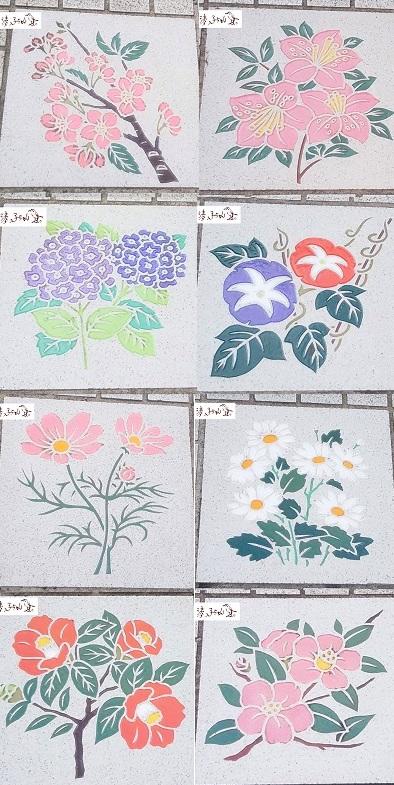
Sakura, flower azalea of ward
Hydrangea, Asagao
Cosmos, nogiku
Sweet
This road, nicknamed Showa-dori, has the name of "Tokyo Metropolitan Road Main Regional Road No. 316". When viewed from the pedestrian bridge, you will notice that the roadway is very large. It is said that this was widely taken with lessons learned from the fact that sparks moved across roads during the Great Kanto Earthquake of 1923 and the spread of fires. In addition, there are many companies in this area, and many business people use this pedestrian bridge on weekdays. It would be nice if I could look at the picture at my feet and feel a little relieved.
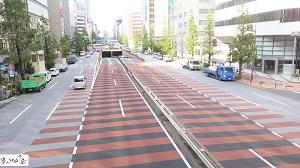
Chuo-ku Tourism correspondent Minatokko-chan

No. 7 May 11, 2018
[Asunaro]
May 9, 2018 14:00
Seven kinds of flowers and trees that Sen no Rikyu loved
One of the "Rikyu Seven Best Flowers" is Yamahoshi.
It gives white flowers with a calm impression.
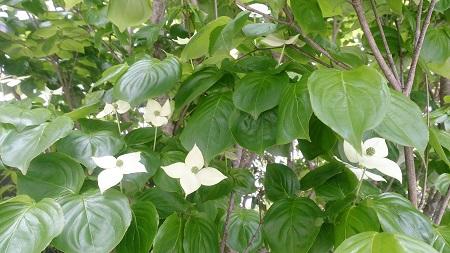
The round flower part in the center is the head of Buddhist monk.
Four white bracts are turned into a "hood"
It is the origin of the flower name.

I see it in casual everyday life
And a modest flower
Sen no Rikyu brought value as a tea flower.
At this time, it was a street tree in Chuo-ku.
You can touch it.
◆Kyobashi Daikon Riverside Hospitality Garden ()
Kyobashi Northwest Hashizume, 3-4 Kyobashi, Chuo-ku, Tokyo
◆Chuo-ku: Water and Green Contact Map
[Hanes]
May 6, 2018 18:00
Hello. This is a new correspondent, Hanes. 
It seemed long and short GW...How did you spend your time?
I was a major in world history during the exam, and I wanted to visit once for a long time.
To a Greek city where ancient history and culture live.
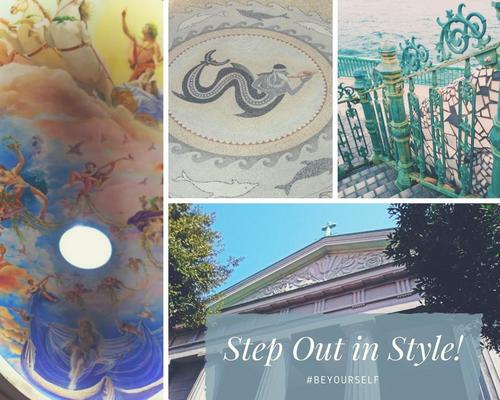
...I didn't go there.
I visited a place in Chuo-ku where you can feel Greece.
This time, in addition to Greece, we will focus on spots where the influence of Italy can be seen.
I invite you to take a temporary trip to Greece and Italy.
[Nihonbashi / Kyobashi area]
■Mitsui Main Building
The building was completed in 1929 as the former Mitsui Main Building was damaged by the Great Kanto Earthquake.
The colint order found on the outer wall is a masterpiece, whether from a distance or just below.
I never thought, "Isn't you come to Greece?"
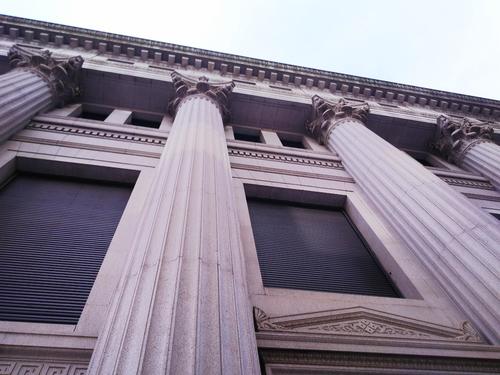
■Mitsukoshi Nihonbashi Main Store
This is an Italian Renaissance-style building designated as a national important cultural property.
I tend to be distracted by the famous lion statue that welcomes customers at the front entrance.
In fact, there is a statue of Hermes, a commercial god that appears in the Greek (Rome) mythology.
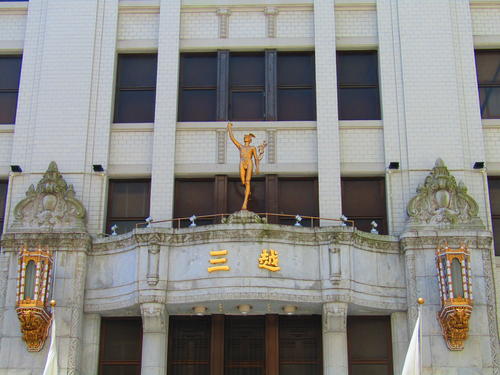
■Hario Glass Building (HARIO Building)
The head office building and showroom of a heat-resistant glass tableware company, which is also the registered Tangible Cultural Property of the country.
It was originally used as the Kawasaki Savings Bank Tomizawacho Branch at the beginning of its construction.
There are still Colint-style large orders that were popular in bank construction in the early Showa era.
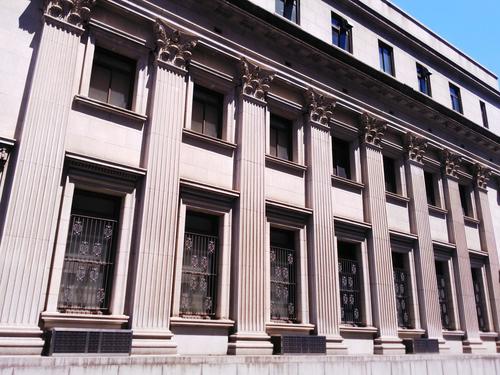
■Meijiya Kyobashi Building
It is a Renaissance-style office building that is connected to the subway station.
If you walk around the city in this way, you will also study the Chuo-ku Tourism Certification.
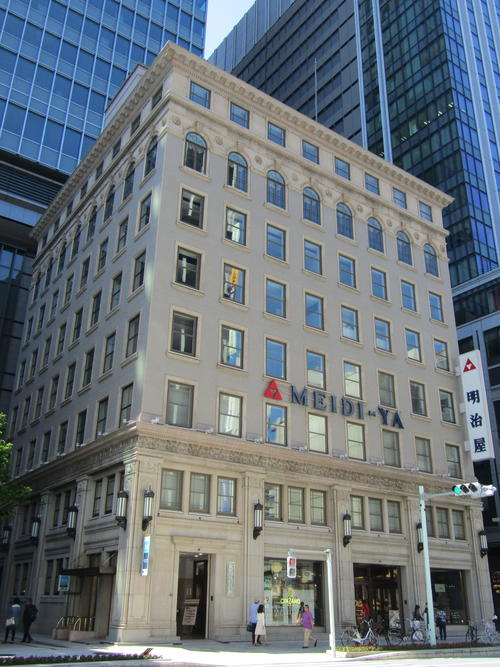
[Ginza Area]
■Ginza Station
If you have used Ginza Station, you may know.
Near the ticket gate here, there are several Mercury statues created by Kio Kasagi!
It seems that it has become a symbol of the subway since it was installed in 1951.
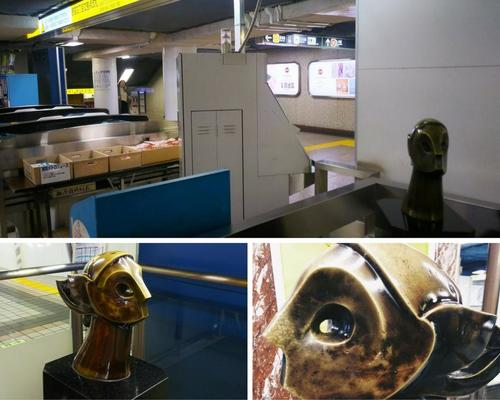
■THE APOLLO (Tokyu Plaza Ginza 11F)
It has become a hot topic since the first landing in Japan in the spring of 2016.
Modern Greek restaurant from Sydney, Australia
I'm afraid I haven't tasted the Greek food yet.
A senior correspondent is reporting.
Mr. Ginzo: Greek food THE APOLLO in Tokyu Plaza, Ginza
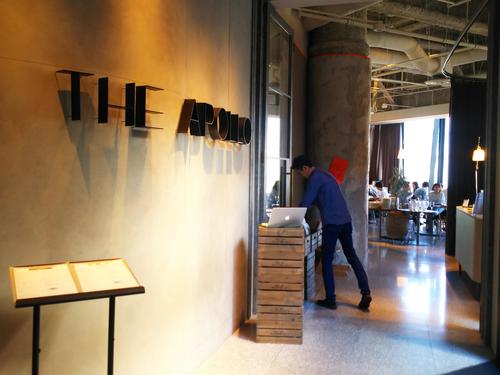
[Tsukiji / Akashicho area]
■Catholic Tsukiji Church
In 1878, the Gothic-style cathedral built in the Tsukiji Foreign Settlement was destroyed by the Great Kanto Earthquake....
Therefore, in 1927, he modeled the St. Magdalena Cathedral in Paris.
The Greek temple Parthenon-style church was rebuilt
It seems that this style was based on the hope of Bishop Ray, Tokyo at the time.
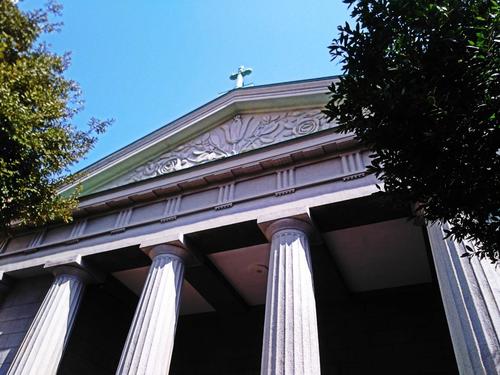
It looks like a stone, and in fact this wooden church
Because the wall is painted mortar, it may have a stone atmosphere.
What you can see in front is a Doria-style order.
During the war, the Akashicho area was fortunate to escape air raids and has been able to convey its appearance to the present.
■Gas lamps
I stand near Rehaport Akashi and Akashi Kindergarten.
According to the information board, it is made of cast iron and takes a Corinth style.
Although the lamp part of the pillar has been restored, it seems that it has become a remnant of Chuo Ward Daini Junior High School, which was previously located in this place.
This junior high school was consolidated together with Daiichi Junior High School in 1984, and now exists in Ginza as Chuo-ku Ginza Junior High School.

[Harumi area]
■Harumi Island Triton Square
Triton is the god of the sea that appears in Greek mythology.
On the premises of the facility, there is a triton statue, a triton mosaic picture, and a triton mosaic.
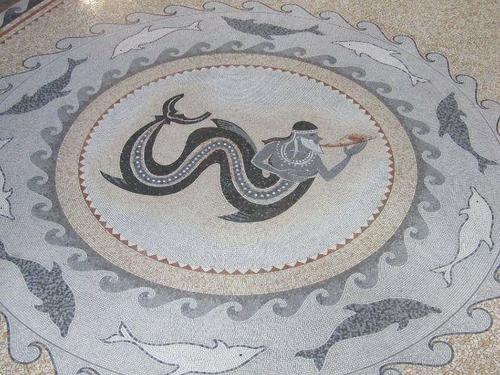
There is one of the largest ceiling paintings in Japan (@ 2nd floor patio "Mythical Square") designed by Italian fresco painters.
It was too large to fit all of the large ceiling paintings.
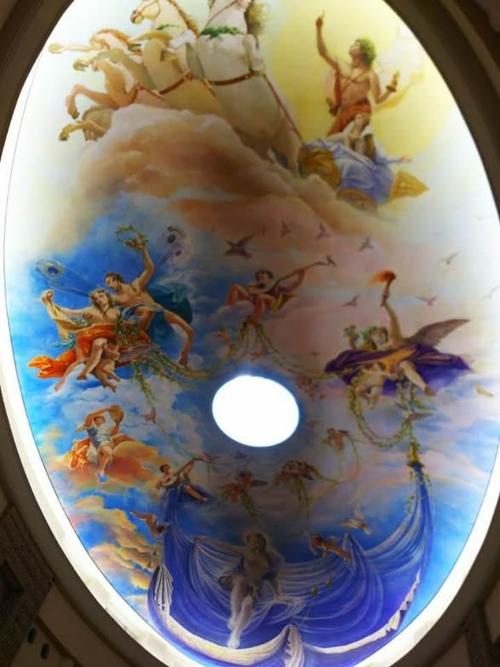
[Limited Time]
■FANCL Ginza Square 10F Royal Room
For a limited time from May 4th (Fri) to 11th (Fri), the theme was "Koi Rose, Love Banana, Love Marriage".
A garden (free admission / free) to enjoy in flower language has opened.
The process of love is expressed by flowers and their flower language.
Near the entrance, Orr Laya Grandiflora's "Slight Thoughts" and Linalia's "Aware of this Love".
Near the exit, there are Ficas Unberta's "married love" and wild strawberry "happy home".
The main one is roses, but if you look carefully, you will find plants related to Greece.

The first one is the mertle in Greece, which has the flower language of "a symbol of love and immortality."
Since it appears many times in Greek mythology, it is a plant that is inseparable from Greece!
The second is the olives that you would imagine when you say Greece.
Flower language is "peace and wisdom."
Since the birth of the Ancient Olympics, the winners of the competition have been given olive crowns.
The idea of "peace" contained in olives is the same.
It has been handed down to the modern Olympics with the aim of "world peace."
By the way, this is the end of the Greek and Italian excursion in Chuo-ku, how was it?
Chuo-ku, which has been influenced by Tsukiji and other countries....
It's just a part of that.
When you come to play, be sure to look for an overseas landscape.
|
Links
|
![]() also came with coffee after dinner.
also came with coffee after dinner.


 Too much maniac ... Gibo-chan.
Too much maniac ... Gibo-chan. Binoculars are also installed at hand, and I feel the pride of the exhibition that the more you expand, the more you can understand the detailed design.
Binoculars are also installed at hand, and I feel the pride of the exhibition that the more you expand, the more you can understand the detailed design. There were a lot of school excursions and Oboshiki students in the hall.
There were a lot of school excursions and Oboshiki students in the hall. There was also a miniature of Mitsui Echigoya (now Nihonbashi Mitsukoshi), which flourished with no current silver price. The reason why women's gaze is gathered by wrestlers who walk gently on the road is probably due to the detailed setting that women were banned at that time.
There was also a miniature of Mitsui Echigoya (now Nihonbashi Mitsukoshi), which flourished with no current silver price. The reason why women's gaze is gathered by wrestlers who walk gently on the road is probably due to the detailed setting that women were banned at that time.





















